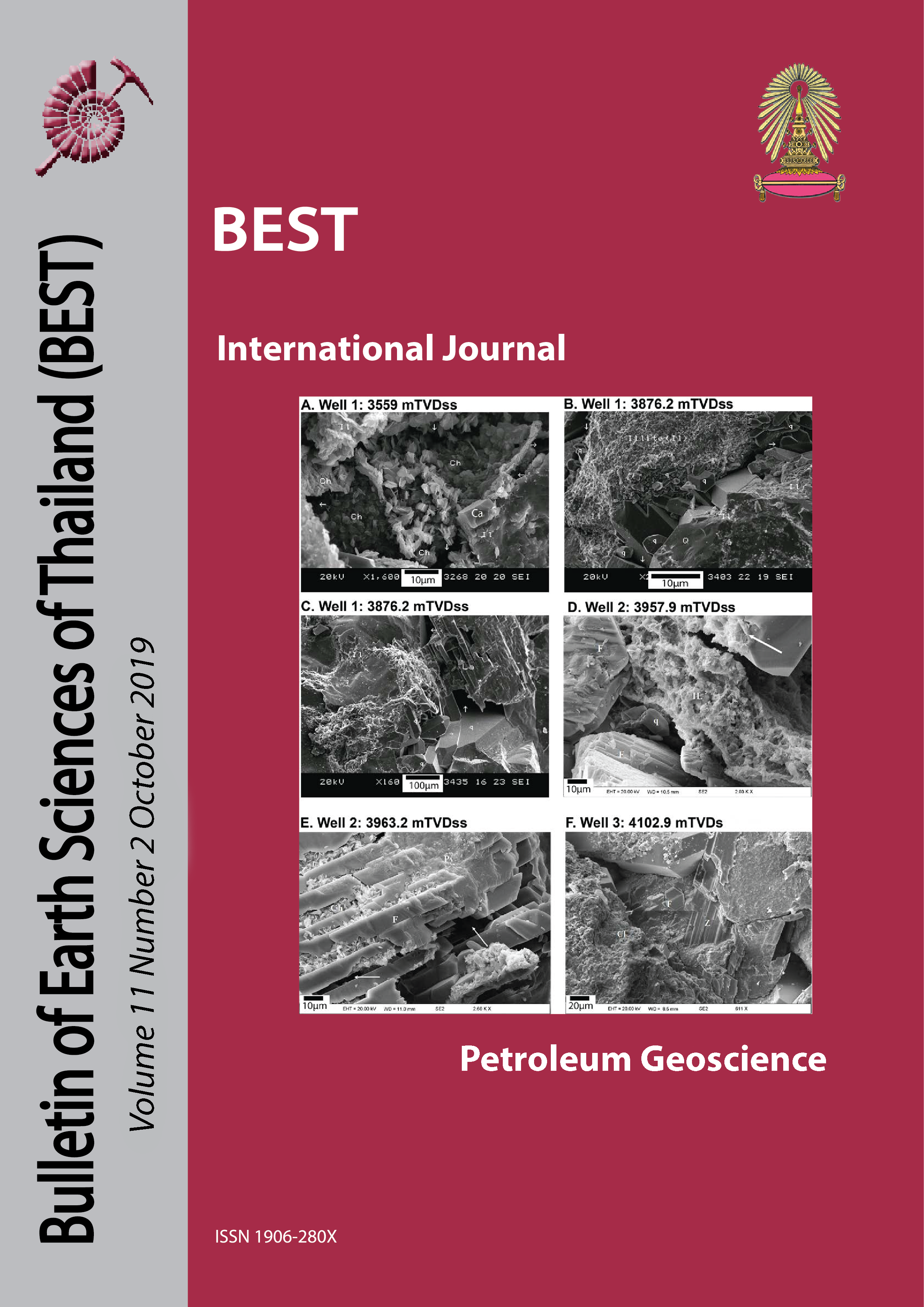DEPOSITION, DIAGENESIS AND RESERVOIR QUALITY OF SANDSTONE RESERVOIRS: A CASE STUDY IN THE CUU LONG BASIN, OFFSHORE VIETNAM
Main Article Content
Abstract
The sandstone reservoirs are major reservoirs in siliciclastic worldwide. Therefore, a good understanding of the development of internal rock properties is extremely important, especially in terms porosity and permeability (indicate reservoir storage and flow capacity), which are in turn controlled by mineral compositions, rock textures, and diagenetic processes. This project studied the E and F formations in three wells in the Cuu Long Basin, with the aim of better defining controls on porosity and permeability (poroperm), not just in terms of depositional character, but also diagenetic overprints. Core samples were analyzed via thin section observations, scanning electron microscopy (SEM), X-Ray diffraction (XRD), Capillary Pressure (PC) and Helium Porosity-Permeability measurements, together with petrophysical evaluation.
The E formation was deposited in a fluvial-lacustrine environment that is characterized by claystone/shale interbedded with sandstone, with reduced depositional permeability in the finer-grained intervals. XRD and SEM indicate rock quality in the sandstone reservoirs was influenced by a variety of authigenic minerals, such as carbonate cements, quartz overgrowths, zeolites, and laumontite clays, all of which tend to reduce poroperm. The F formation was deposited in a higher energy setting. This was mostly a braided channel environment indicated by a blocky shape in the wireline across the sandy interval and typically good primary porosity and permeability. As in the F formation, the reservoir quality is strongly controlled by diagenetic evolution. Pore throats in the E and F sandstones are reduced in size by intense compaction and a combination of pore-filling minerals including; calcite cements, authigenic clays, and quartz overgrowths, leading to a negative relationship with poroperm. However, this negative relationship is not as clear in the E formation.
Article Details

This work is licensed under a Creative Commons Attribution-NonCommercial-NoDerivatives 4.0 International License.
Copyright © 2008 Department of Geology, Faculty of Science, Chulalongkorn University. Parts of an article can be photocopied or reproduced without prior written permission from the author(s), but due acknowledgments should be stated or cited accordingly.
References
Chen, J., J. Yao, Z. Mao, Q. Li, A. Luo, X. Deng, and X. Shao, 2019, Sedimentary and diagenetic controls on reservoir quality of low-porosity and low-permeability sandstone reservoirs in Chang101, Upper Triassic Yanchang Formation in the Shanbei area, Ordos Basin, China: Marine and Petroleum Geology, v. 105, p. 204-221.
Dong, T, L., P. D. Hai, 2007. Cuu Long sedimentary basin and petroleum resources. The Petroleum Geology and Resources of Vietnam. In: The Science and Technology Publishing House, 1st ed.
Djebbar, T., C. D. Erle, 2015, Petrophysics: Theory and Practice of Measuring Reservoir Rock and Fluid Transport Properties, Gulf Professional Publishing, 894p.
Haile, B. G., T. G. Klausen, U. Czarniecka, K. Xi, J. Jahren, and H. Hellevang, 2018, How are diagenesis and reservoir quality linked to depositional facies? A deltaic succession, Edgeøya, Svalbard: Marine and Petroleum Geology, v. 92, p. 519-546.
Huy, N. X., Bae Wisup., T. N. San., V.T. Xuan., J. SungMin., Kim D.Y., 2012, Fractured basement reservoir and oil displacement mechanism in White Tiger Field, Offshore Vietnam. AAPG Search and Discovery Article, AAPG International Conference & Exhibition, Singapore, 16-19 September 2012.
Morley, R. J., V. D. Bui, T. T. Nguyen, A. J. Kullman, R. T. Bird, V. K. Nguyen, and H. C. Nguyen, 2019, High-resolution Palaeogene sequence stratigraphic framework for the Cuu Long Basin, offshore Vietnam, driven by climate change and tectonics, established from sequence biostratigraphy: Palaeogeography,Palaeoclimatology, Palaeoecology, v. 530, p. 113-135.
Phuong, K. L, 2014, Generation of authigenic clay minerals during diagenesis of Oligocene sandstone: Science & Technology Development, v.17, p.21-26.
Phuong, L. K, 2017, Characterization of petrography and diagenetic processes influence on porosity and permeability of Oligocene sandstone reservoir rocks, block 15-2 in Cuu Long basin: International Journal of Engineering Research and Applications, v. 07, p. 62-73.
Schmidt, W. J., B. H. Hoang, J. W. Handschy, V. T. Hai, T. X. Cuong, and N. T. Tung, 2019, Tectonic evolution and regional setting of the Cuu Long Basin, Vietnam: Tectonophysics, v. 757, p. 36-57.


